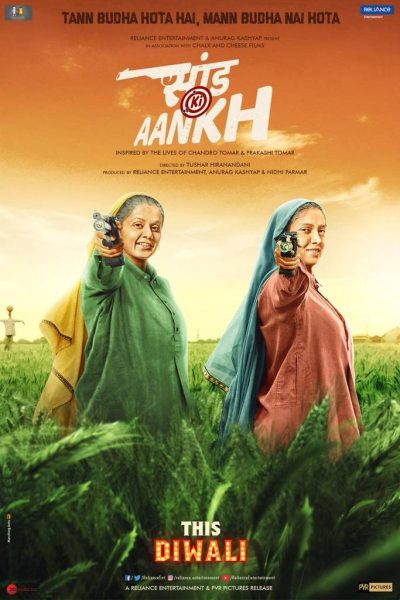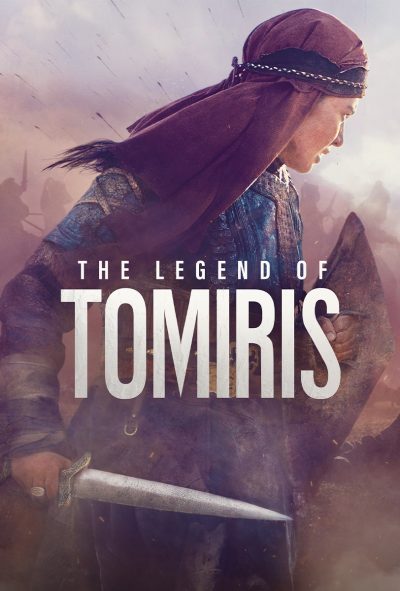★½
“It’s trying. So very trying…”
 Maybe I’m getting too old for this kind of thing. Perhaps there was a time in my callow youth when I would have been grateful for the light-to-moderate amount of gratuitous nudity which this contains. Now, though? Its flaws overwhelm any such merits. Or maybe it was the fact that I watched this while dozed up to the eyeballs on DayQuil, and frankly, coughing up phlegm proved to be a more satisfactory pursuit.
Maybe I’m getting too old for this kind of thing. Perhaps there was a time in my callow youth when I would have been grateful for the light-to-moderate amount of gratuitous nudity which this contains. Now, though? Its flaws overwhelm any such merits. Or maybe it was the fact that I watched this while dozed up to the eyeballs on DayQuil, and frankly, coughing up phlegm proved to be a more satisfactory pursuit.
It takes place in a supposed “brothel” run by Monique (Love). Quotes used advisedly, since it looks considerably more like someone’s house. A party of high-rollers are scheduled to be coming in, dropping thousands of dollars: though quite why they want to, escapes me, since the staff here are no more than “somewhat attractive.” You could probably catch better fish with a bottle of Jager in your average night-club on a Friday evening. Anyway, doubts about this aside, it turns out this “party” is actually a robbery, who loot the place after abusing the women.
Needless to say, they’re not standing for that, so Kitty (Nguyen), Trix (Amber), Beretta (Valentien) and the rest of the girls ride out in hot pursuit, intent on recovering the ill-gotten gains and punishing the perpetrators. Fortunately, the gang have gone their separate ways, which makes it easier for the women to take them down: the old “Let’s split up!” mistake. But perhaps things aren’t quite as cut and dried as they appear. Maybe there’s a snake in the grass, who is quite happy to let her fellow hookers thin out the herd on her behalf, because the fewer slices of the pie there end up being, the better it will be for the survivors.
It’s all tiresomely amateur. Not least, the feeble attempts at comic relief, such as the gangster kingpin, Kaiser, whose droning complaints about lost money to a ski-mask clad ninja, go on way past what could remotely be considered entertaining. The repeated us of Six Million Dollar Man sound effects also should also have been strangled at birth. The pacing in general is awful, and the lead performances generally reflect the fact that most of the actresses are better known for adult work than their Broadway resumes. Nguyen and Love are, at least relatively credible, capable of walking and delivering lines at the same time. Some of the others? Not so much. Let’s leave it at that.
There were a couple of moments in the action which did actually work. Though I’m not sure how much sense they could be said to make, e.g. one of the women suddenly pulling a flaming sword out of… well, I’m not even going to hazard a guess at that. But when you’re left yearning for the understated subtleties of an Andy Sidaris film, there’s clearly something wrong. It might have succeeded better with alcohol, but that would likely not have combined well with my medications. Not a risk I was prepared to take, at least.
Dir: Thegin German + Robert Rowland
Star: Christine Nguyen, Britney Amber, Kleio Valentien, Rebecca Love





 This suffers from being almost exactly the same story as the previous feature we reviewed about women Kurdish fighters going up against ISIS,
This suffers from being almost exactly the same story as the previous feature we reviewed about women Kurdish fighters going up against ISIS,  Wildlife photographer Harper Sykes (Dexter-Jones) is out in the wilderness of the “Watchatoomy Valley” [fictitious, but apparently located somewhere in the Virginias], when she stumbles across a group of men brutally attacking a victim. She snaps a few pics before fleeing the scene, but her attempts to report the incident to the authorities backfire immediately, and she quickly finds herself at the mercy of their leader, the appropriately-named Ravener (Longstreet). He explains the victim was a scout for big business, whose predations would destroy the natural environment, and so had to be stopped. Now, Harper is next in line. However, she is not the innocent and helpless victim they think. Even when she has the chance to escape, Harper decides to stay in the valley, and take vengeance on Ravener and the rest of his clan.
Wildlife photographer Harper Sykes (Dexter-Jones) is out in the wilderness of the “Watchatoomy Valley” [fictitious, but apparently located somewhere in the Virginias], when she stumbles across a group of men brutally attacking a victim. She snaps a few pics before fleeing the scene, but her attempts to report the incident to the authorities backfire immediately, and she quickly finds herself at the mercy of their leader, the appropriately-named Ravener (Longstreet). He explains the victim was a scout for big business, whose predations would destroy the natural environment, and so had to be stopped. Now, Harper is next in line. However, she is not the innocent and helpless victim they think. Even when she has the chance to escape, Harper decides to stay in the valley, and take vengeance on Ravener and the rest of his clan. In 9th-century Scandinavia, teenage girl Runa (Stefansdotter) lives deep in the woods, with her mother, Magnhild (Idah), blind grandfather Ragnvald (Beck) and younger sister Bothild (Lyngbrant). Father Joar is notable by his absence, having gone off on a Viking raid to seek fortune for the family, and is now well overdue. However, he did at least train Runa to be a markswoman with the bow. Problems start when she finds a wounded warrior, Torulf, lying in the forest, and brings him back to their cabin, much against Magnhild’s wishes.
In 9th-century Scandinavia, teenage girl Runa (Stefansdotter) lives deep in the woods, with her mother, Magnhild (Idah), blind grandfather Ragnvald (Beck) and younger sister Bothild (Lyngbrant). Father Joar is notable by his absence, having gone off on a Viking raid to seek fortune for the family, and is now well overdue. However, he did at least train Runa to be a markswoman with the bow. Problems start when she finds a wounded warrior, Torulf, lying in the forest, and brings him back to their cabin, much against Magnhild’s wishes. A promising idea has its concept snuffed out by shaky execution and even worse writing. Sam (Rogers) is a former solder and now single mother. When her child falls sick, Sam heads for the chemist’s for medicine. She never gets there, being abducted in a van and rendered unconscious. She wakes in a large warehouse-like facility in the middle of nowhere, which turns out to be a military production facility. She’s not the only woman there, and finds that an invisible adversary, using advanced tech to cloak his presence, is taking advantage of the weekend to turn the place into a stalker’s amusement park. However, Sam’s background perhaps gives her a very particular set of skills, unavailable to the other victims.
A promising idea has its concept snuffed out by shaky execution and even worse writing. Sam (Rogers) is a former solder and now single mother. When her child falls sick, Sam heads for the chemist’s for medicine. She never gets there, being abducted in a van and rendered unconscious. She wakes in a large warehouse-like facility in the middle of nowhere, which turns out to be a military production facility. She’s not the only woman there, and finds that an invisible adversary, using advanced tech to cloak his presence, is taking advantage of the weekend to turn the place into a stalker’s amusement park. However, Sam’s background perhaps gives her a very particular set of skills, unavailable to the other victims. We reviewed
We reviewed  It’s interesting to compare this with the recently reviewed
It’s interesting to compare this with the recently reviewed  Not quite the first film from Kazakhstan I’ve ever seen. That would be
Not quite the first film from Kazakhstan I’ve ever seen. That would be  This version of the story of Rani Laxmibai, Queen of Jhansi, falls unfortunately between two stools. As a result, it seems likely to leave no-one satisfied, so its critical (3.5 on IMDb, 24% on Rotten Tomatoes) and commercial (less than $180K in North America) failure doesn’t come as much of a surprise. Western audiences were perhaps put off by the stereotypical portrayal of the colonialists – matters may not have been helped by a surprising, and I’d say quite harsh, R-rating. But, conversely, Indian audiences may well have been unimpressed by the Westernization of their beloved historical heroine. Most obviously – apart from the star being born in Manhattan – would be the hinted-at relationship between the Jhansi and good Briton, Major Robert Ellis (Lamb). This element seems to have been taken from Rani, a book by London-based author Jaishree Misra, whose publication triggered protests in her native land in 2008.
This version of the story of Rani Laxmibai, Queen of Jhansi, falls unfortunately between two stools. As a result, it seems likely to leave no-one satisfied, so its critical (3.5 on IMDb, 24% on Rotten Tomatoes) and commercial (less than $180K in North America) failure doesn’t come as much of a surprise. Western audiences were perhaps put off by the stereotypical portrayal of the colonialists – matters may not have been helped by a surprising, and I’d say quite harsh, R-rating. But, conversely, Indian audiences may well have been unimpressed by the Westernization of their beloved historical heroine. Most obviously – apart from the star being born in Manhattan – would be the hinted-at relationship between the Jhansi and good Briton, Major Robert Ellis (Lamb). This element seems to have been taken from Rani, a book by London-based author Jaishree Misra, whose publication triggered protests in her native land in 2008. Make no mistake, this is a cheap and unashamed knockoff of Jumanji, made by the company who specializes in these mockbusters, The Asylum. It’s not their first such venture into the action heroine genre. If you remember my evisceration of
Make no mistake, this is a cheap and unashamed knockoff of Jumanji, made by the company who specializes in these mockbusters, The Asylum. It’s not their first such venture into the action heroine genre. If you remember my evisceration of